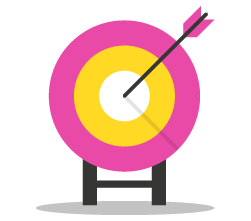Research

Before you can plan and create your infographic, you need to make sure you have a solid base of content and data to visualise. Your infographic design should support and champion your message and not the other way around. Content is the hero of your infographic. What you write or say and how you express it is ultimately more important than how your infographic looks.
Start researching early. Gathering your information and data takes longer than creating the infographic itself. Give yourself time to really understand the information you are visualising and communicating.
At uni your assessment criteria will give you clear parameters about what is important and what you need to include. Keep your assessment criteria handy so you are always matching your research to what you need to produce.
Tip
Need help finding information and data for your infographic? The Skills for Study webpage is a great place to start. It contains tools, techniques and guidance to help you research.
Plan
Being prepared can minimise stress and increase your confidence.
Get started by clicking on the flipcards below to view 3 key questions to consider when planning your infographic:
Content
What are the key concepts or data I need to visualise?

Your first step in planning your infographic is to work out which key information and data will be represented in your infographic. Remember that content is the hero of an infographic.
First you will need to organise your data and information. Read through your research notes and the data and information you have found and highlight the main points and key takeaways. These will be the things you will visualise on your infographic.
Tip
If you are working with a large amount of information and data, it can be helpful to group your data and look for correlations.
Audience
Who am I creating this infographic for?
The audience is central to your infographic creation. They shape what information and data you  include, the type of images you use, and how you present the infographic.
include, the type of images you use, and how you present the infographic.
Think about the different ways you communicate with your fellow students, colleagues, and friends. You will need to tailor your infographic to suit their level of understanding.
Just like you might practice a speech with a friend it’s a great idea to show your infographic to someone to get feedback or suggested improvements. If it doesn’t make sense to them it probably needs to be clearer.
Purpose
Why am I creating this infographic?

You will also need to understand the purpose of the infographic you are making.
Being clear about your goal for the infographic allows you to better target your research focus. It also means you will be able to shape your design more easily.
Before you start, ask yourself "what do I need this infographic to do?".
Click the icons below to find out about different infographic purposes.